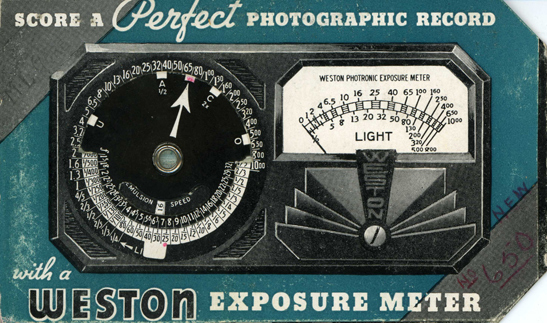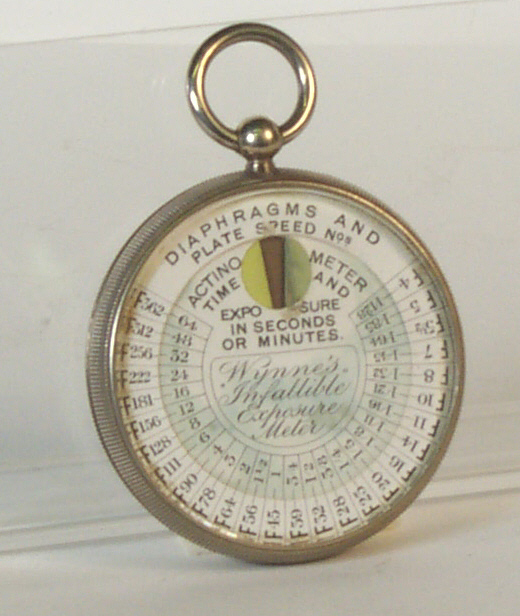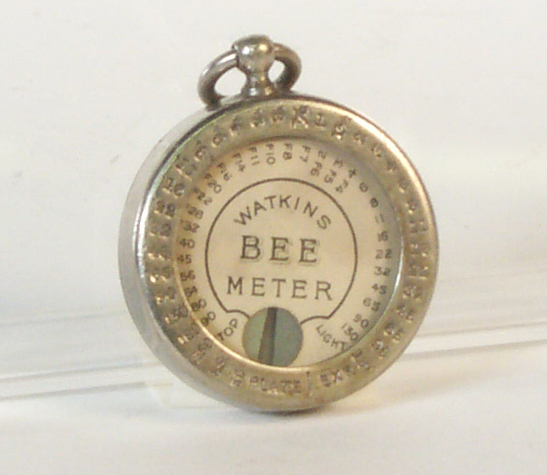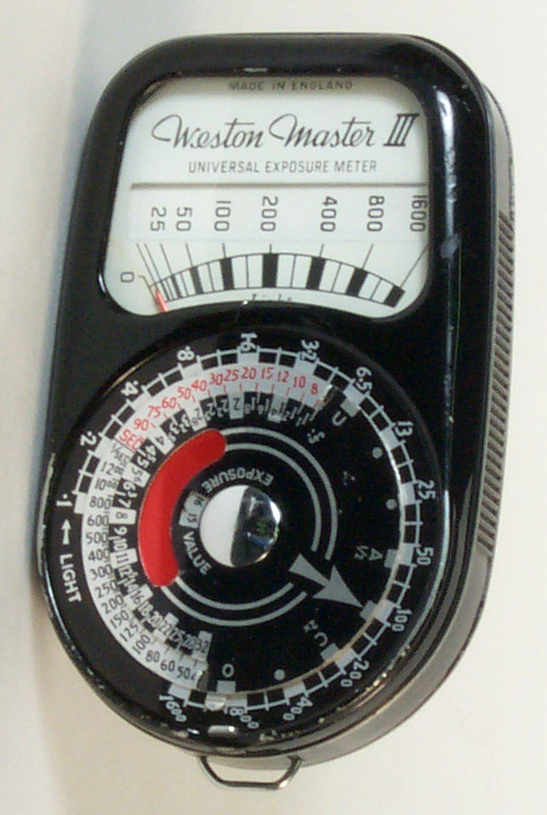Today, we take correct exposure for granted; the camera does it all for us—automatically. However, things were very different in the past. For the next stage of my alphabetical journey I shall be shedding some light on the murky world of exposure meters.

Correct exposure is, of course, essential for good photography. During photography’s formative years, determining exposure times was a matter of trial and error and experience rather than an exact science. As the photographer William Lake Price wrote in 1868:
No fixed data can be given for duration of exposure… Still, by practice, a sort of instinct grows on the photographer.
It wasn’t until the 1880s, with the commercial introduction of dry plates manufactured with a consistent sensitivity, that exposure devices first became practicable. All exposure meters can be grouped into four types; extinction meters, comparison photometers, actinometers and photoelectric meters.
Extinction meters utilised a variable density filter with a series of numbers. The correct exposure was indicated by the number that just ceased to be visible (became extinct) when viewing the subject to be photographed.
Comparison photometers worked on the same principle as extinction meters but compared the brightness to be measured against a light source of standard intensity. Patented in 1885, the first comparison photometer to be designed for photographic use incorporated a candle. Later devices, however, mostly used electric bulbs run from a standard voltage.
The most popular type of light measuring device in the first decades of the last century was the actinometer—also known as the tint-meter. Actinometers measured the amount of time it took for a piece of light-sensitive paper to darken so that it matched a standard tint.

Actinometers were often designed in the form of a pocket watch. There were many different models on the market but one of the most successful was designed by Alfred Watkins. A respected naturalist and keen apiarist, Watkins called it the Bee meter. First appearing at the turn of the century, it sold in huge numbers and was still on sale as late as 1939.

Photoelectric meters measure the output of a photoelectric cell which generates an electric current in proportion to the amount of light falling on it. Early photoelectric meters used selenium cells. Introduced in 1932, one of the first was designed by the British-born American electrical engineer and industrialist Edward Weston.

Weston died in 1936 but the business was carried on by his appropriately named son Edward Faraday Weston who, in 1939, introduced a new model called the Master Universal meter. With its characteristic elongated D-shaped case, this set the pattern for the subsequent, hugely successful, series of Weston exposure meters.
Further reading and interesting links
- ‘Exposure Meters’, Early Photography: A useful introduction to exposure meters and sensitometry.
- Weston Meter: A site dedicated to the history of Weston exposure meters.
- ILFORD Exposure Calculators & Meters: A comprehensive site charting the history of Ilford exposure meters.
- Brian Coe, Cameras: From Daguerreotype to Instant Pictures (Chapter 19, pp.213–224), Gothenburg: Nordbok, 1978.
- J.F.Dunn, Exposure Meters and Practical Exposure Control, London: The Fountain Press, 1952.
- J.H.Pledge, ‘Exposure Meters’, The Photographic Journal, May 1932, pp.206-216.